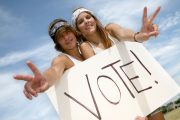
The United States has denied flying F-35s over Ukraine, after Singapore’s Defense Minister Ng Eng Hen claimed that the advanced fighter jets were being used to observe Russian troops in the region.
Eng Hen made the remarks on February 28 while speaking in the national parliament about the importance of long-term planning in the defense industry. He noted that Singapore was closely assessing the U.S.-made F-35, particularly when it comes to its use in real-world conditions.
He noted that the U.S. has used the F-35 not only to target Islamic State (IS, formerly ISIS) terrorists in the Middle East, but also “to locate and identify surface-to-air missile sites of Russian units in Ukraine,” adding that this reconnaissance was later shared with NATO members. He did not say whether an F-35 ever entered Ukrainian air space or if flights were carried out over NATO territory.
On March 4, a spokesperson for the Pentagon declined to comment on the minister’s remarks, but indicated that “I can confirm that the US does not fly F-35s in Ukraine.”
Last March, the website C4ISRNET reported, citing Colonel Craig Andrle, the commander of the 388th Fighter Wing, that the U.S. used F-35s to gather reconnaissance on “threats” in Ukraine and the Russian enclave of Kaliningrad. The fighters “were able to locate and identify surface-to-air missile sites and pass that information to the rest of the coalition,” the article said.
However, while Andrle declared that the F-35 could be a formidable war asset without firing a single shot due to its intelligence-gathering capabilities, it sometimes struggled to spy on Russian positions. The colonel recalled that the F-35 had failed to identify a Russian S-300 missile system because it was potentially “operating in a war reserve mode that we haven’t seen before.”
Since the Ukraine conflict began in February 2022, NATO has increased its air presence in Eastern Europe, deploying additional fighters and surveillance aircraft. The U.S.-led military bloc is using Airborne Warning and Control System (AWACS) aircraft equipped with long-range radars to conduct regular patrols.
Kremlin spokesman Dmitry Peskov said last year that NATO countries were acting as if they were Russia’s “enemies,” noting that their reconnaissance is operating around the clock against Moscow.
Meanwhile, the West is also planning to provide Ukraine with F-16 fighter jets, which are widely expected to arrive later this year. Russian Foreign Ministry spokeswoman Maria Zakharova has warned that those aircraft would be “legitimate targets” for the Russian military, adding that such a move only increases the risk of a direct clash between Russia and NATO.
Also, the CIA has “many” bases in Ukraine, the head of the Russian Federal Security Service (FSB) Alexander Bortnikov told Russian television on February 29, when asked about a New York Times (NYT) report on the spy network.
The U.S. newspaper described a decade-long record of cooperation between the American spy agency and Ukrainian special services.
Based on the article, which was published on February 25, the CIA has 12 secret bases on Ukrainian soil which are actively working against Russia. The paper noted that over the past eight years, the CIA has trained and equipped Kyiv’s intelligence officers in underground bunkers, some of which are located deep in the forests of Ukraine.
“They [U.S. intelligence] had entered there a long time ago and are using this resource to do the dirty work, on their own and with the hands of the Ukrainian special services,” Bortnikov told Russia’s Channel One television.
He said “work is ongoing,” when asked whether Russia can get to the CIA sites.
The NYT report confirms that Ukrainian commando units involved in anti-Russian sabotage had obtained special training from American agents, who also helped them track Russian troop movements. Kyiv has also been behind the targeted assassination of several high-profile figures in Donbass over the years, the newspaper said.
Last year, The Washington Post published a similar exposé on the CIA’s role in turning Ukraine into a tool against Russia. Unlike the NYT, the Post discussed Kyiv’s state assassinations program in detail and Ukraine’s apparent role in the deaths of journalist and political activist Daria Dugina and military blogger Vladlen Tatarsky, both of whom were murdered in bomb attacks on Russian soil.
In an exclusive interview with the Czech outlets Novinky.cz and Pravo on March 4, French President Emmanuel Macron stated Paris does not intend to send military personnel to Ukraine in the foreseeable future, after appearing to suggest otherwise. He also maintained that France is “not at war against the Russian people.”
Macron clarified that his previous statement “does not mean that we are considering sending French troops to Ukraine in the near future, but that we are opening a debate and thinking about everything that can be done to support Ukraine, especially on its territory.”
Previously, on February 29, the French leader declared that his original comment had been “weighed, thought-through and measured.”
French Foreign Minister Stephane Sejourne told state broadcaster Radio France Inter the following day that the president’s remark about a potential troop deployment had served to increase “strategic ambiguity,” and as a message to the Kremlin that Paris “will not give up the fight [for] the Ukrainians.”
The diplomat added, however, that “everything we do is to avoid war” between Russia and NATO.
Macron’s original suggestion saw major NATO members, including the U.S., the U.K., Spain, Italy, and Germany, issuing clarifications that they harbored no plans to deploy troops to Ukraine.
In the Russo-Ukrainian conflict, four Ukrainian plane-type unmanned aerial vehicles were intercepted on March 5 by Russian air defenses, the Russian Defense Ministry reported. Three were taken out over Belgorod Region, and one over Kursk Region.
An explosion caused a fire at an “infrastructure object” in Belgorod Region, Governor Vyacheslav Gladkov announced, though he did not directly link the incident with Ukrainian attacks. Rescue services cited by Gladkov stated that a fuel tank had been affected, but that the fire had been extinguished before it could spread.




